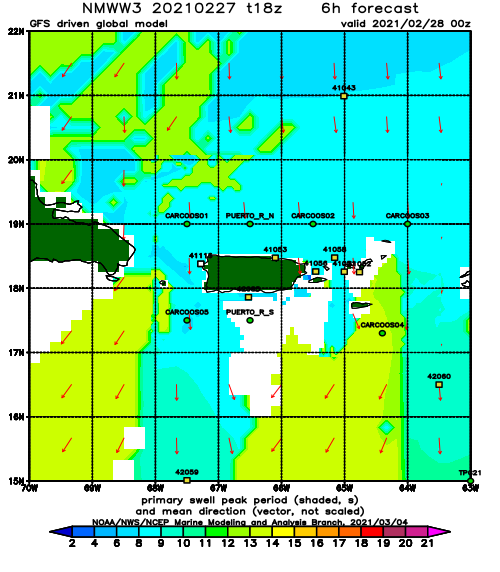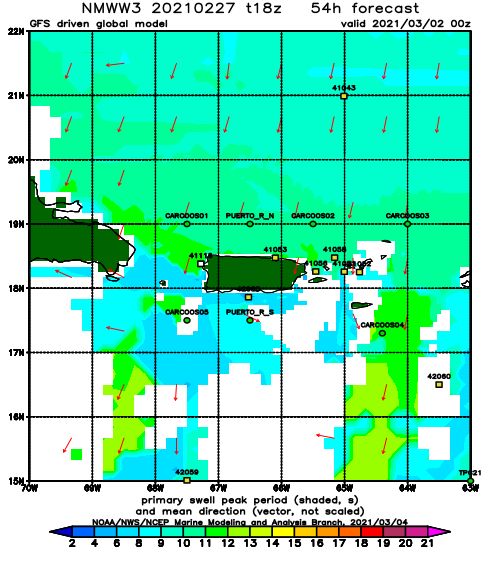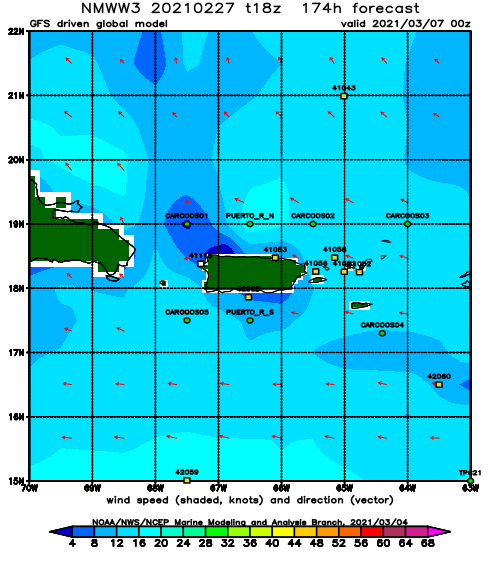Rincon Puerto Rico Surf Forecast – Jan 2, 2016

After a terrible flatspell, there is hope for surfing Puerto Rico.
We will continue to stay small to flat for the next few days, but we finally have some hope on the horizon. This flatspell during prime season has been rough and depressing. Hopefully all of that comes to an end on on the 7th of January, 2016. This coming Thursday should see something. The possible swell has been pegged consistently on model runs and if the trough can get it’s predicted swoop out in the Atlantic as planned, we should see some fun head high surf and decent conditions. Small to flat conditions will persist until then. Let’s wait and see.
Today
NOAA WaveWatch III Wave Model:

Forecast Swell Period:

Forecast Winds:

Sat
NOAA WaveWatch III Wave Model:

Forecast Swell Period:

Forecast Winds:

Sun
NOAA WaveWatch III Wave Model:

Forecast Swell Period:

Forecast Winds:

Mon
NOAA WaveWatch III Wave Model:

Forecast Swell Period:

Forecast Winds:

Tue
NOAA WaveWatch III Wave Model:

Forecast Swell Period:

Forecast Winds:

Wed
NOAA WaveWatch III Wave Model:

Forecast Swell Period:

Forecast Winds:

Thu
NOAA WaveWatch III Wave Model:

Forecast Swell Period:

Forecast Winds:

Fri
NOAA WaveWatch III Wave Model:

Forecast Swell Period:

Forecast Winds:
















